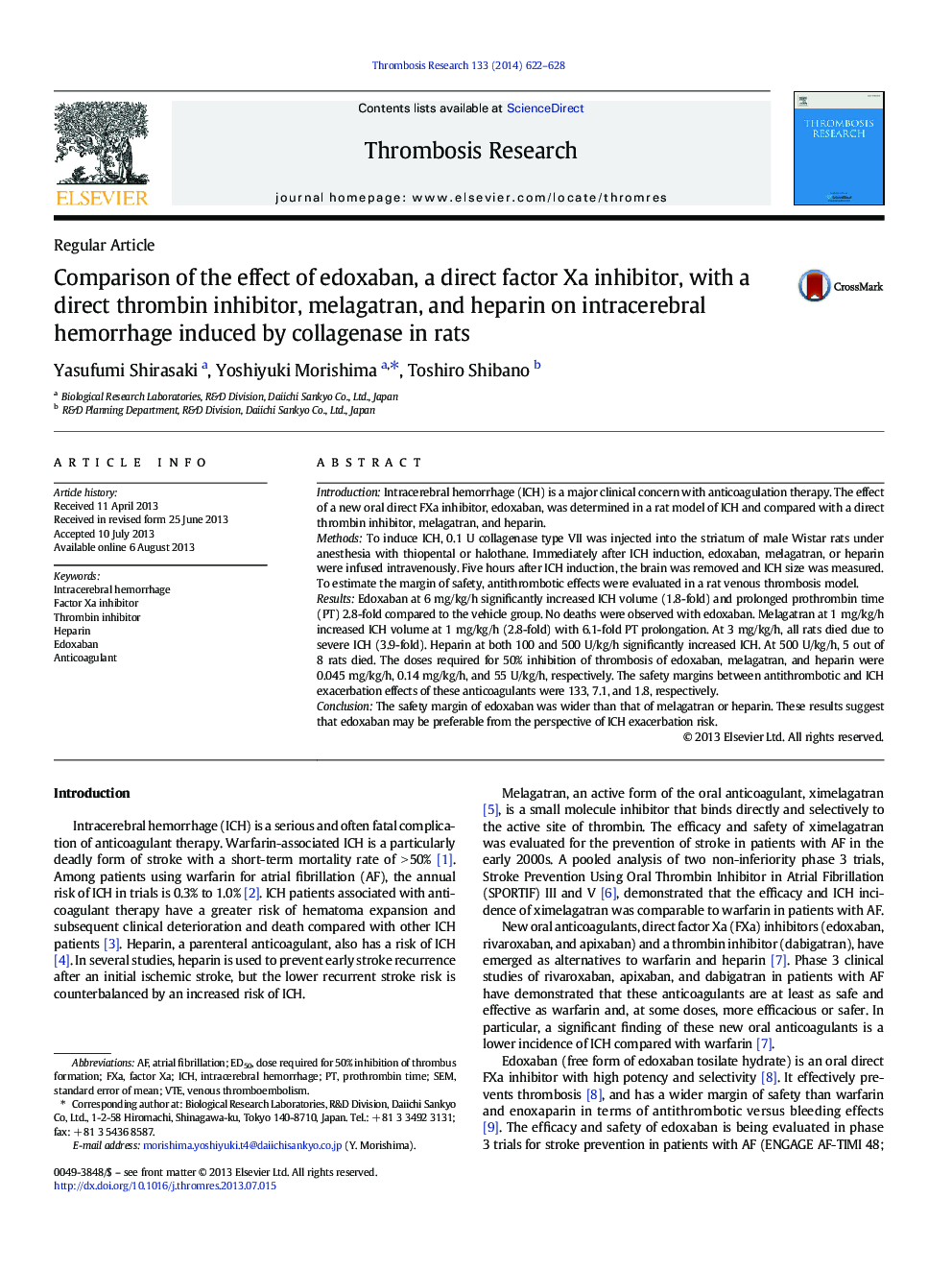| Article ID | Journal | Published Year | Pages | File Type |
|---|---|---|---|---|
| 6001404 | Thrombosis Research | 2014 | 7 Pages |
IntroductionIntracerebral hemorrhage (ICH) is a major clinical concern with anticoagulation therapy. The effect of a new oral direct FXa inhibitor, edoxaban, was determined in a rat model of ICH and compared with a direct thrombin inhibitor, melagatran, and heparin.MethodsTo induce ICH, 0.1 U collagenase type VII was injected into the striatum of male Wistar rats under anesthesia with thiopental or halothane. Immediately after ICH induction, edoxaban, melagatran, or heparin were infused intravenously. Five hours after ICH induction, the brain was removed and ICH size was measured. To estimate the margin of safety, antithrombotic effects were evaluated in a rat venous thrombosis model.ResultsEdoxaban at 6Â mg/kg/h significantly increased ICH volume (1.8-fold) and prolonged prothrombin time (PT) 2.8-fold compared to the vehicle group. No deaths were observed with edoxaban. Melagatran at 1Â mg/kg/h increased ICH volume at 1Â mg/kg/h (2.8-fold) with 6.1-fold PT prolongation. At 3Â mg/kg/h, all rats died due to severe ICH (3.9-fold). Heparin at both 100 and 500Â U/kg/h significantly increased ICH. At 500Â U/kg/h, 5 out of 8 rats died. The doses required for 50% inhibition of thrombosis of edoxaban, melagatran, and heparin were 0.045Â mg/kg/h, 0.14Â mg/kg/h, and 55Â U/kg/h, respectively. The safety margins between antithrombotic and ICH exacerbation effects of these anticoagulants were 133, 7.1, and 1.8, respectively.ConclusionThe safety margin of edoxaban was wider than that of melagatran or heparin. These results suggest that edoxaban may be preferable from the perspective of ICH exacerbation risk.
